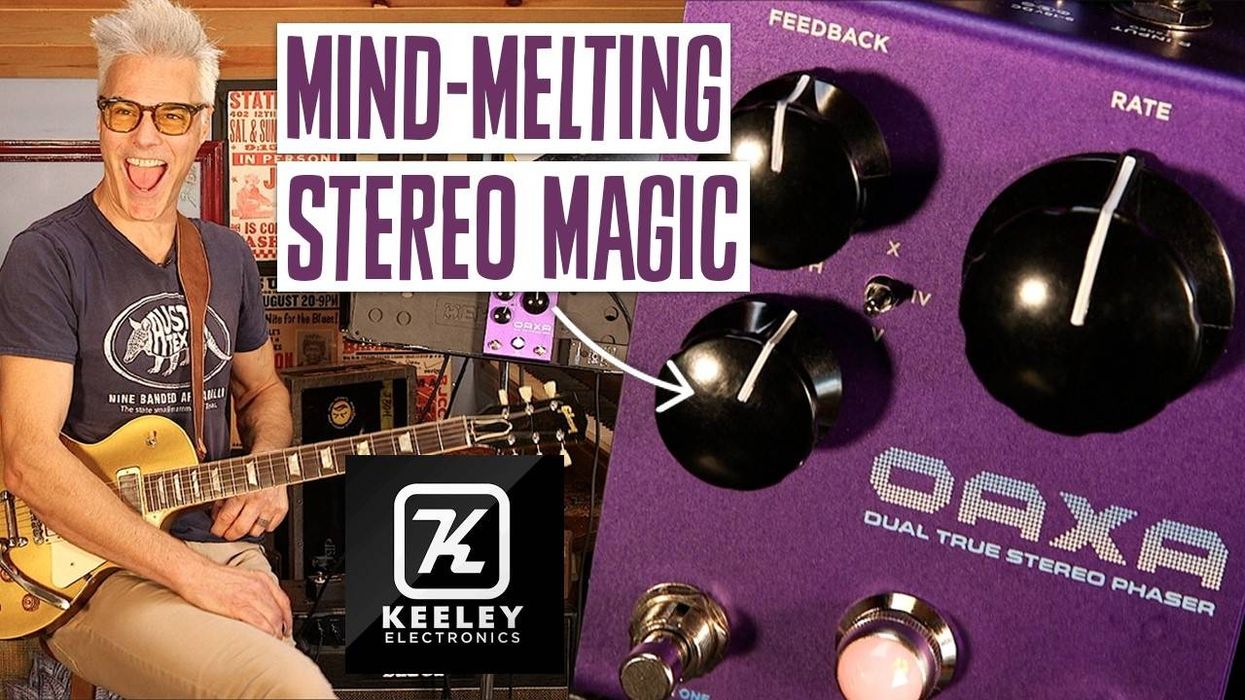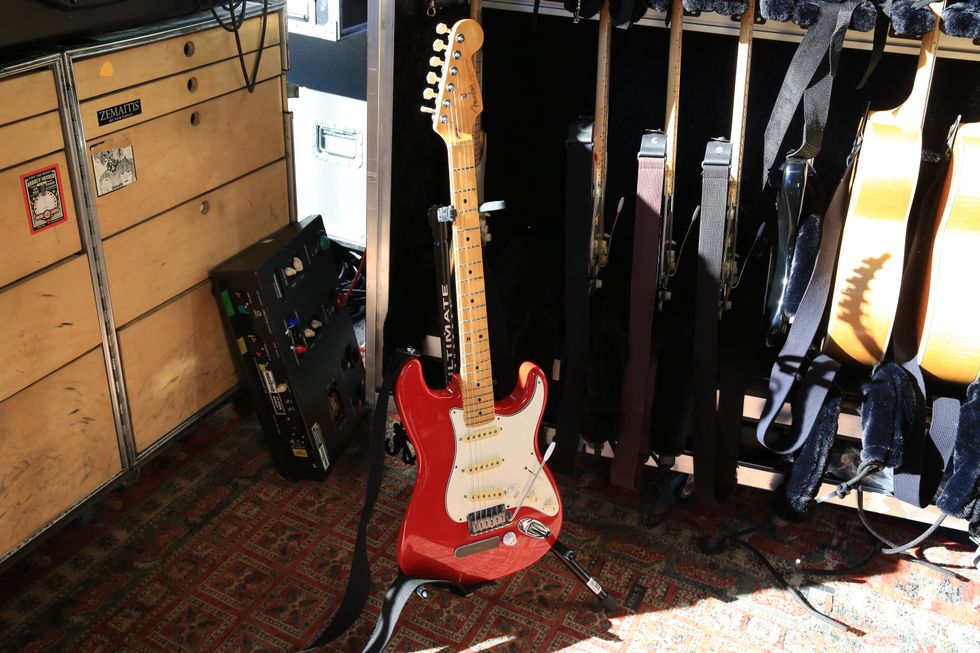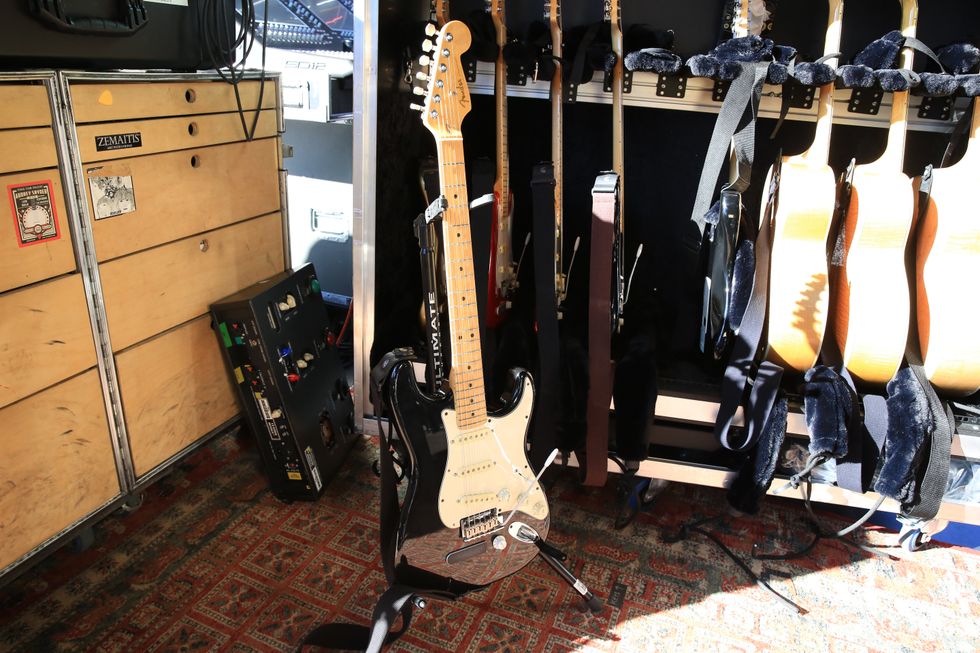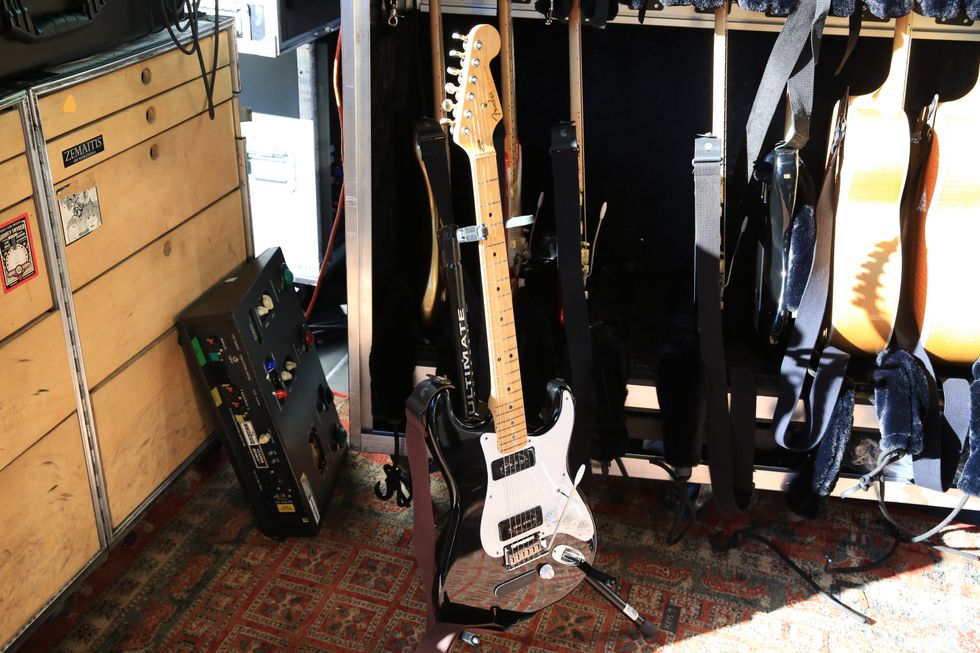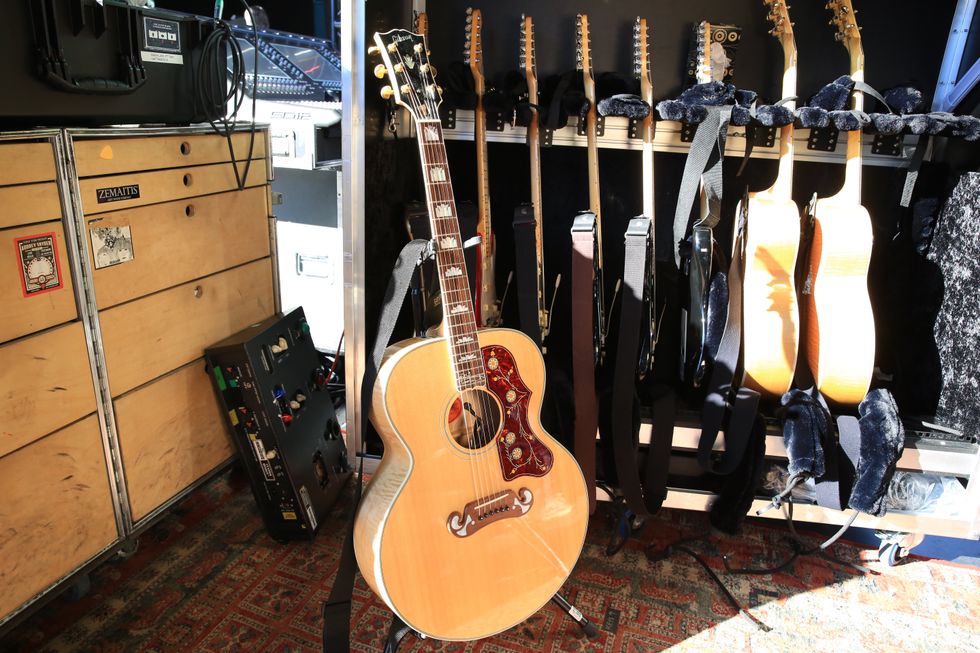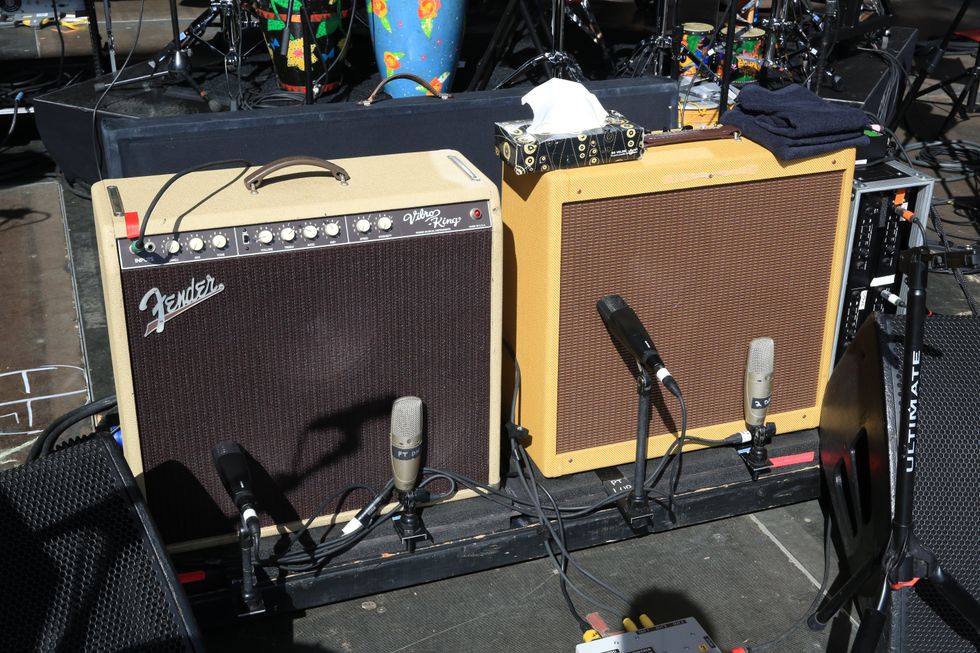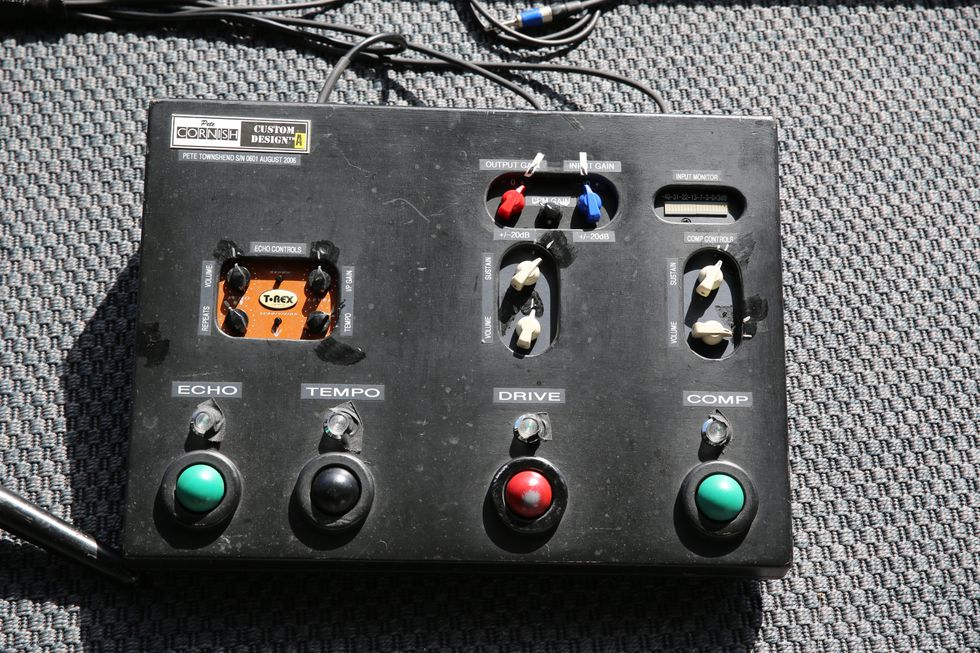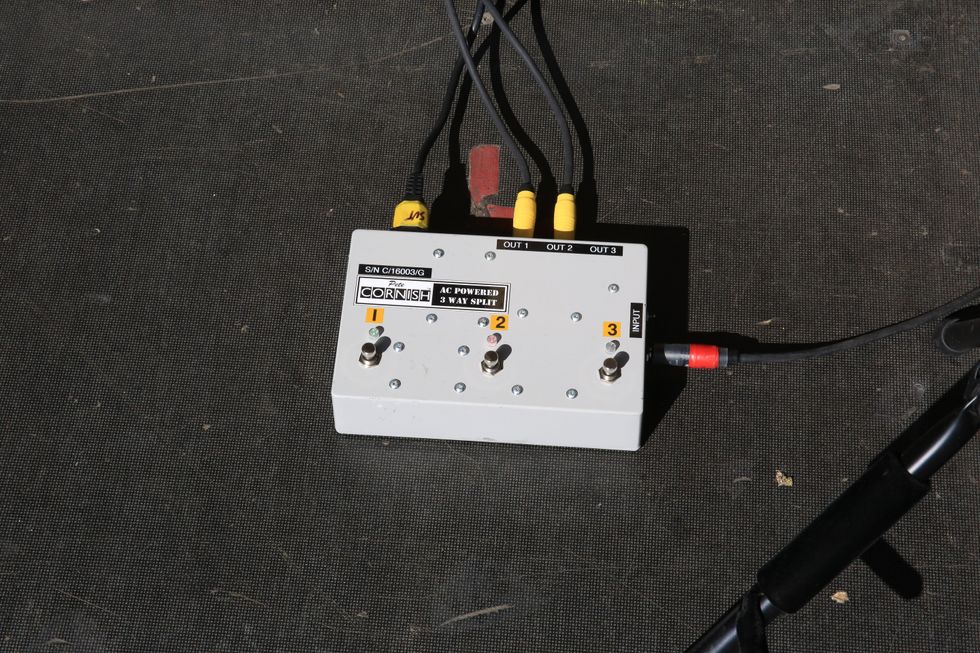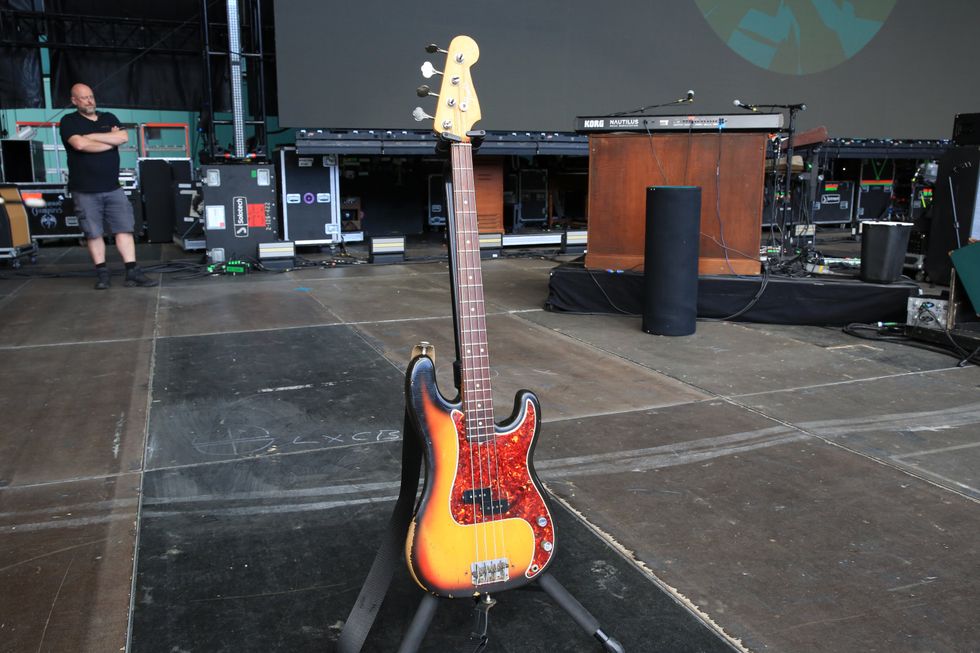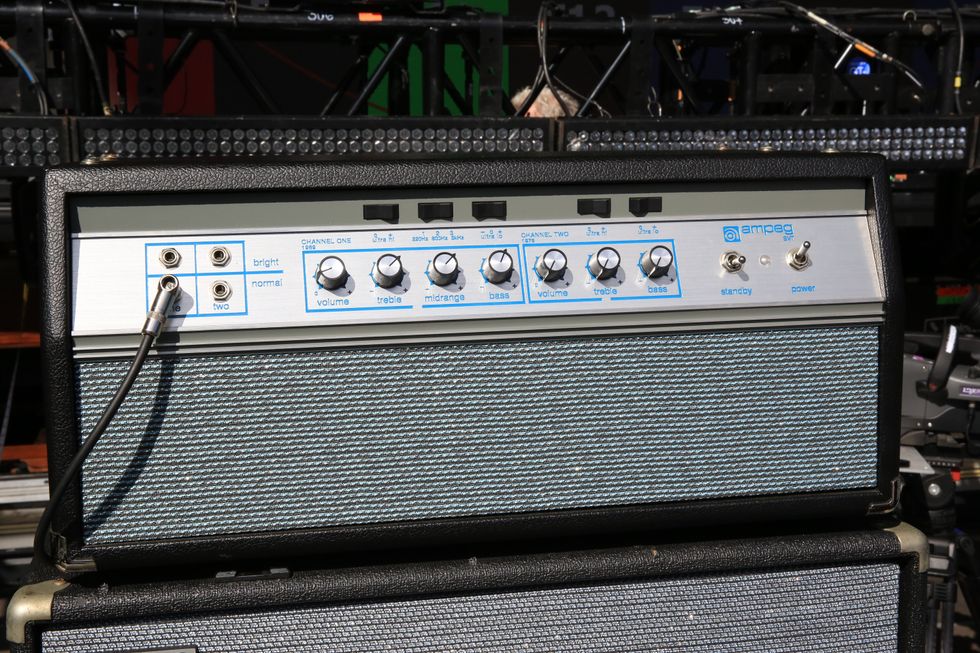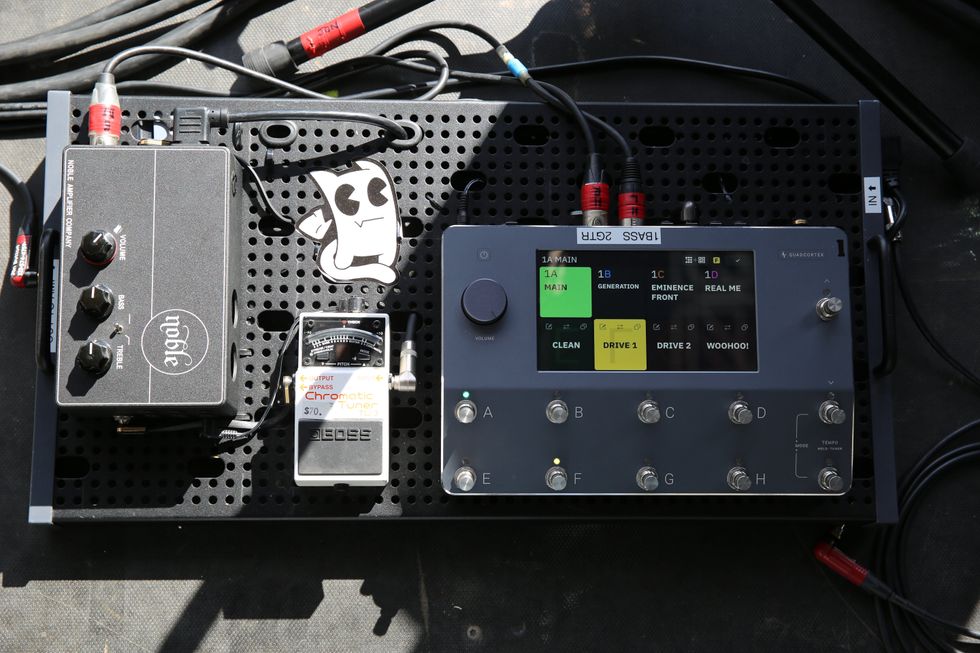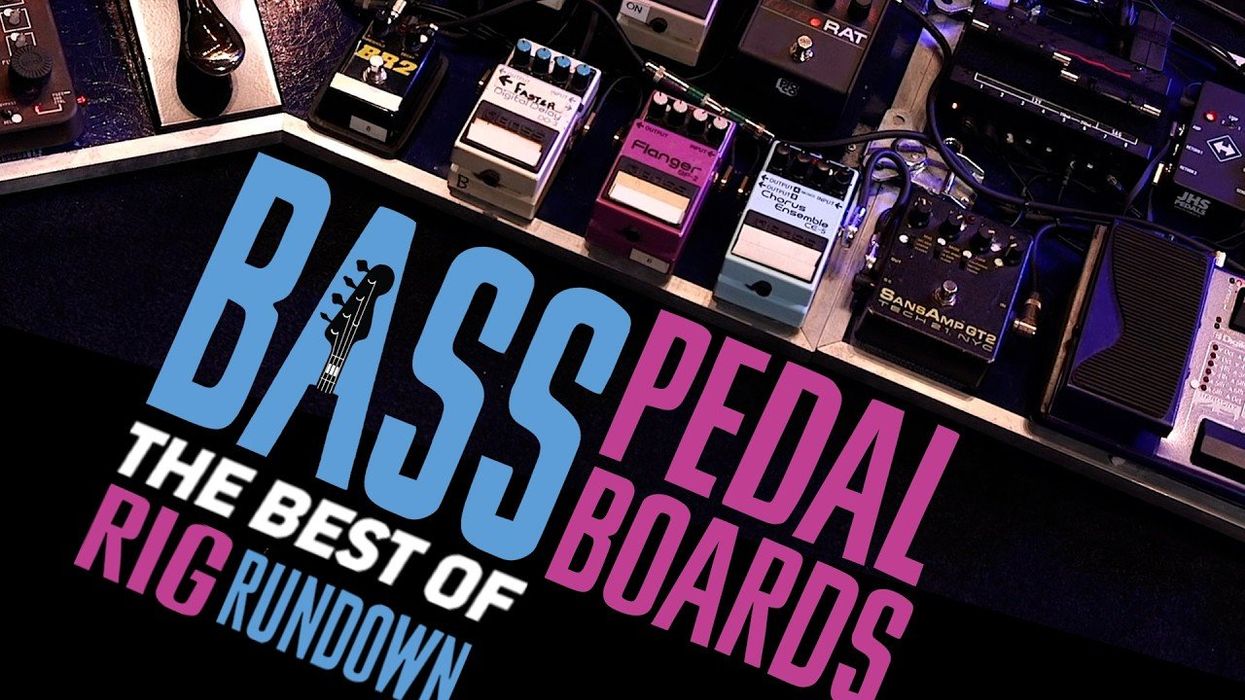Come on down to the crossroads—or the CMA Theatre in Nashville—as we walk through the jaw-dropping rig of devilishly talented shredder Steve Vai.
Steve Vai is much more than a great guitarist. The American guitarist has established himself as a key figure in guitar culture, and one of the world’s leading masters of shred. Vai broke on the scene in 1980 as Frank Zappa’s transcriptionist, until Zappa hired Vai, age 20, to join his touring band—Zappa allegedly called Vai his “little Italian virtuoso.”
Bolstering his guitar theatrics with sharp songwriting and producing, Vai went on to conquer the world of guitar music, winning three Grammys and selling 15 million records. PG was lucky to be invited to Vai’s recent show at the Country Music Hall of Fame’s CMA Theatre in Nashville, where his tech, Doug MacArthur, took John Bohlinger through Vai’s jaw-dropping current touring rig.
Special thanks to Doug MacArthur for explaining this incredibly complex rig.
Brought to you by D’Addario XS Strings.
Evo
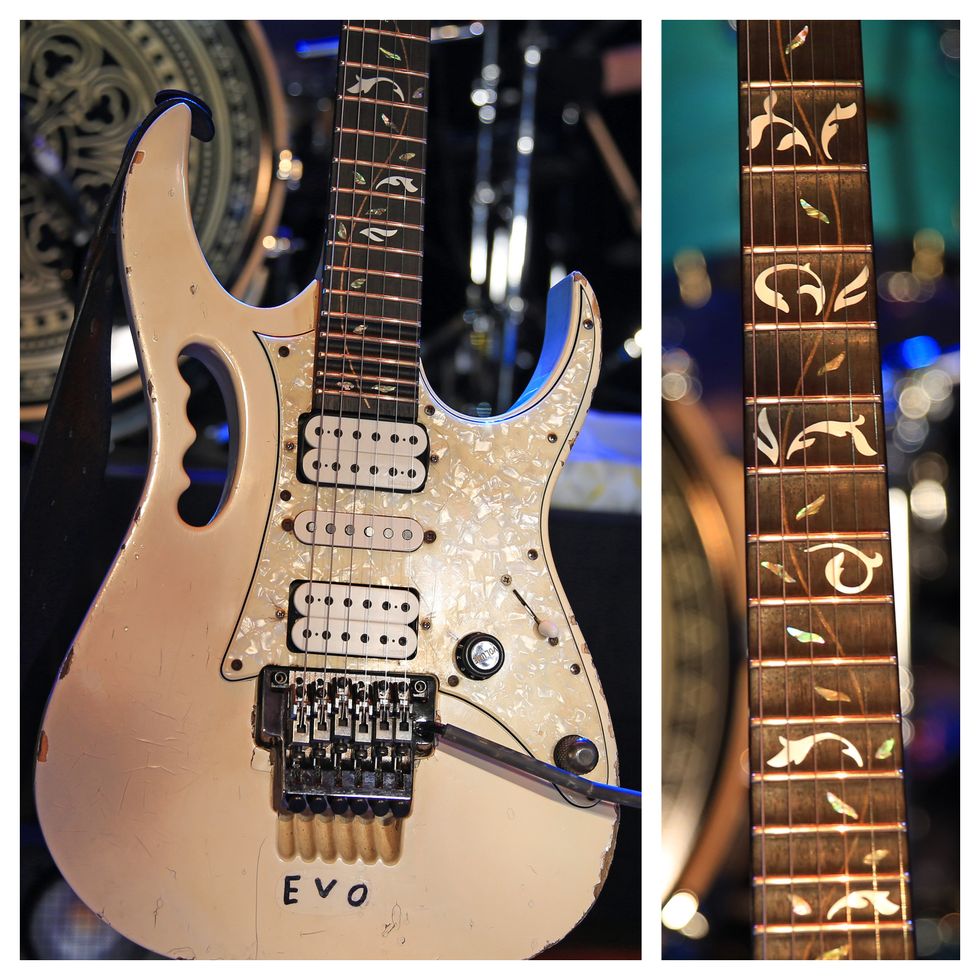
Currently on its fifth neck, Vai’s trusty axe has been a constant for touring and recording since roughly 1992. It sports DiMarzio “Evolution Bridge” pickups in both the neck and bridge position, “EVO gold” Jumbo frets, and a cosmo black Ibanez LO-PRO tremolo. Vai keeps this one in standard tuning, courtesy of .009-.042 Ernie Ball Super Slinkies.
Flo III
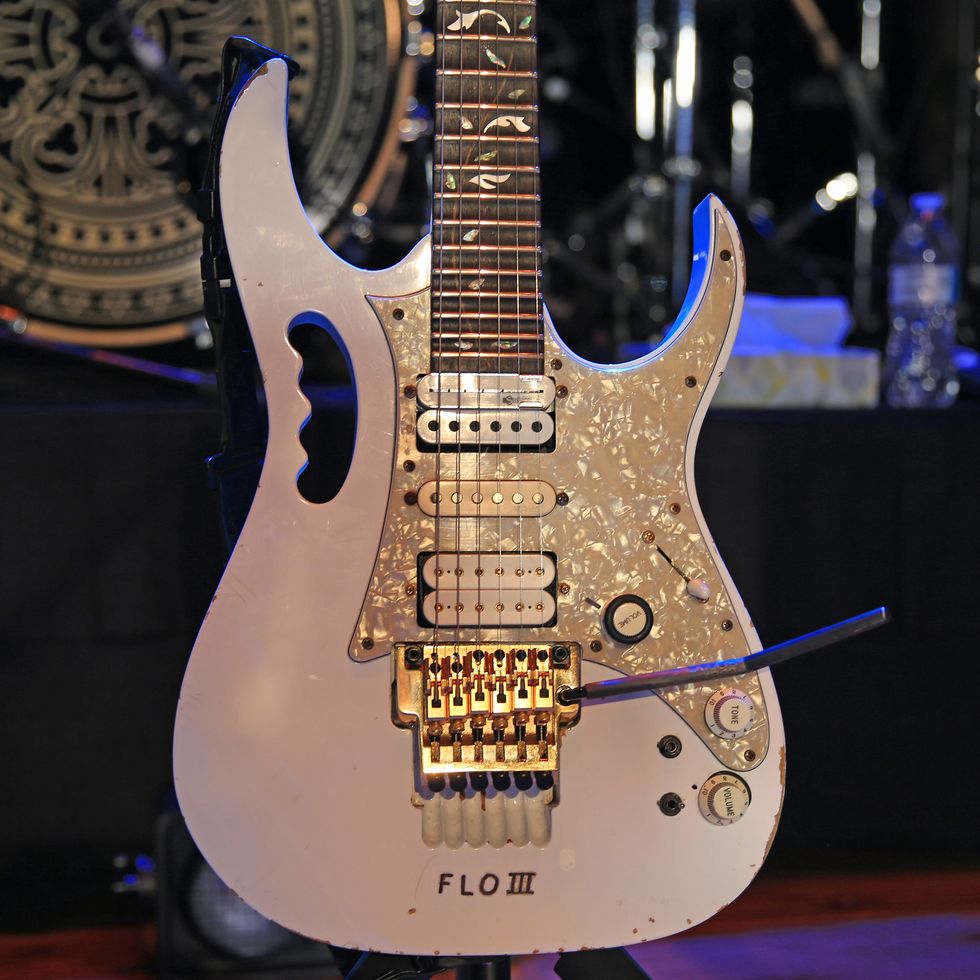
Flo III has been Vai’s main guitar since the late 2000s. This Jem was assembled at the Ibanez Los Angeles Custom Shop, where it was fitted with a Fernandes Sustainer, and modified with a lightly scalloped fretboard. It’s outfitted with EVO gold jumbo frets, a DiMarzio Evolution Bridge pickup, and an Ibanez LO-PRO tremolo. This one also lives in standard tuning, with .009-.042 Ernie Ball Super Slinkies.
Bo
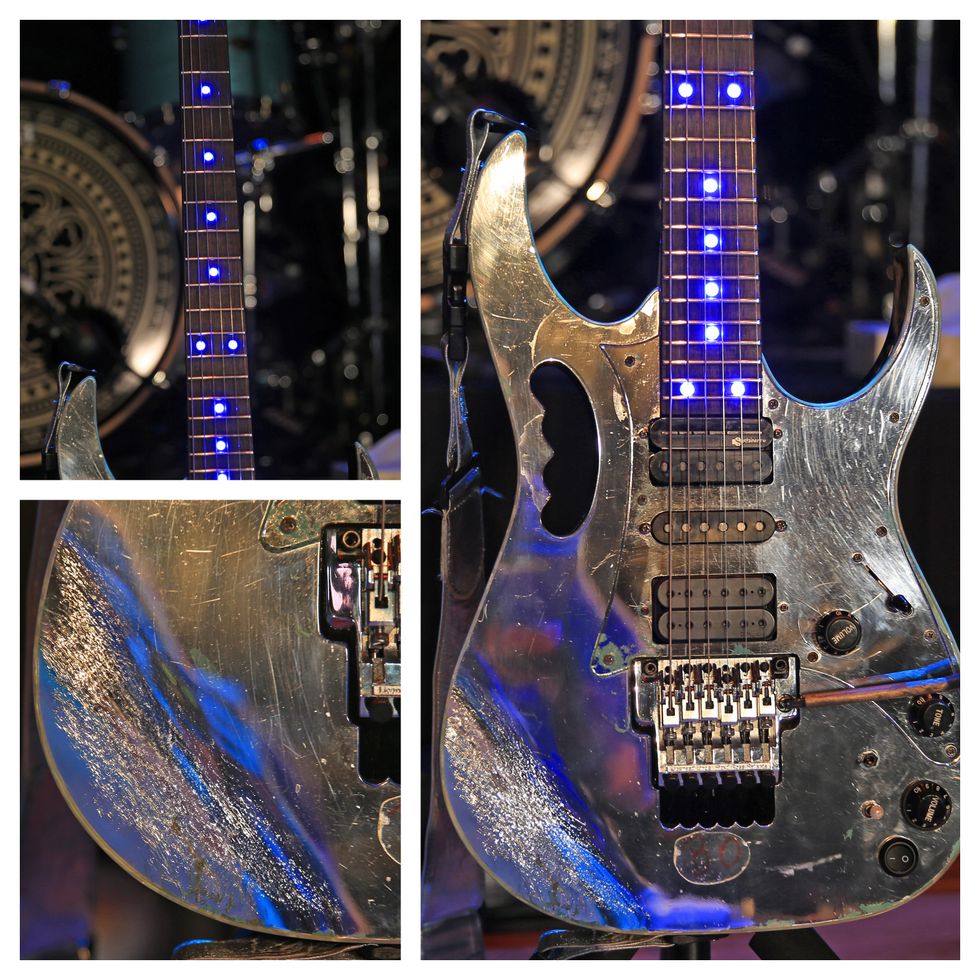
A truly unique aesthetic. Circa 2001, BO was the prototype for the “Jem 77BRMR” model. You’ll notice the mirror crazing under the finish, on the forearm contour. This was worked out for production models, but Vai fell in love with the sound of this particular prototype, and has kept it in the touring lineup since the early 2000s. The neck boasts blue LED front and side dot markers, which were done by Martin Sims. It’s equipped with Jumbo Jescar nickel silver frets, a Fernandes Sustainer, a DiMarzio Evolution bridge pickup, and a LO-PRO Ibanez tremolo. This one rides in drop C tuning, with a set of .010-.052 Ernie Ball Skinny Top Heavy Bottoms.
Little Pretty
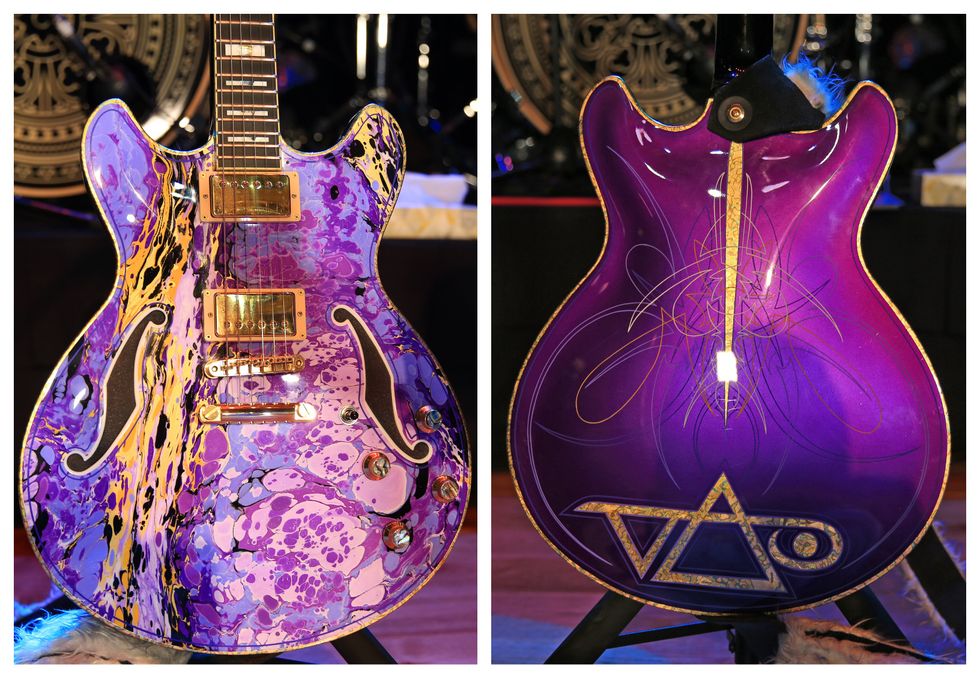
This one is a production model Ibanez John Schofield JSM, outfitted in a loud Bonvillain Dip, with gold leaf binding and unique pin-striping on the back. The electronics are stock, although the tone controls have been disconnected. Little Pretty sports locking Grover tuners, and a Tusq nut. Doug MacArthur has also re-radiused the fretboard to 16” throughout, and re-fretted it with Jumbo EVO gold fretwire, giving this guitar a very familiar feel to Vai. Plus, it’s gussied up with a very well-loved fluffy white strap!
Zeus
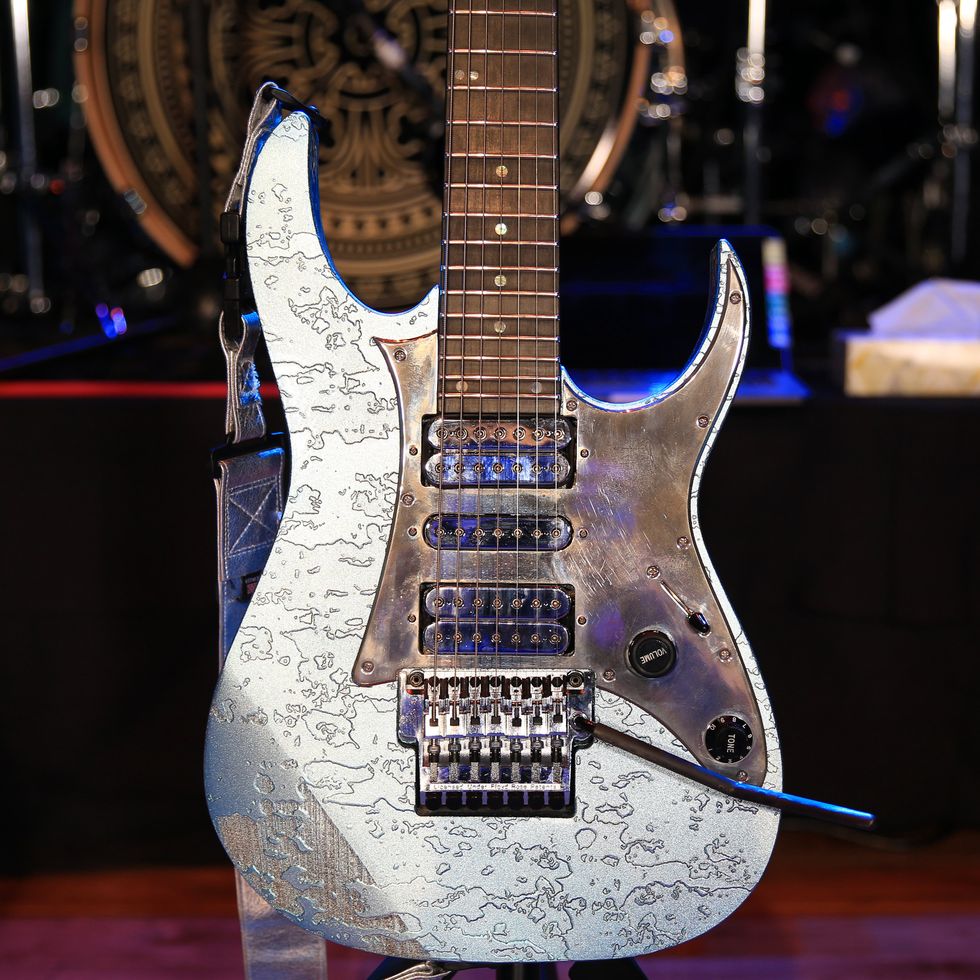
Zeus is a 1998 one-off prototype for the Hoshino 90th anniversary Jem model. Only one 7-string with this aesthetic was made, and it has remained stored away in Steve’s collection until recently, when pulled into touring duty in early 2023. It’s got custom chrome-topped DiMarzio Blaze pickups, and abalone dot inlays, mods made by MacArthur to get it ready for its first tour. It has jumbo nickel-silver frets, and hangs in standard tuning with a low A, thanks to .009-.056 Ernie Balls.
Candle
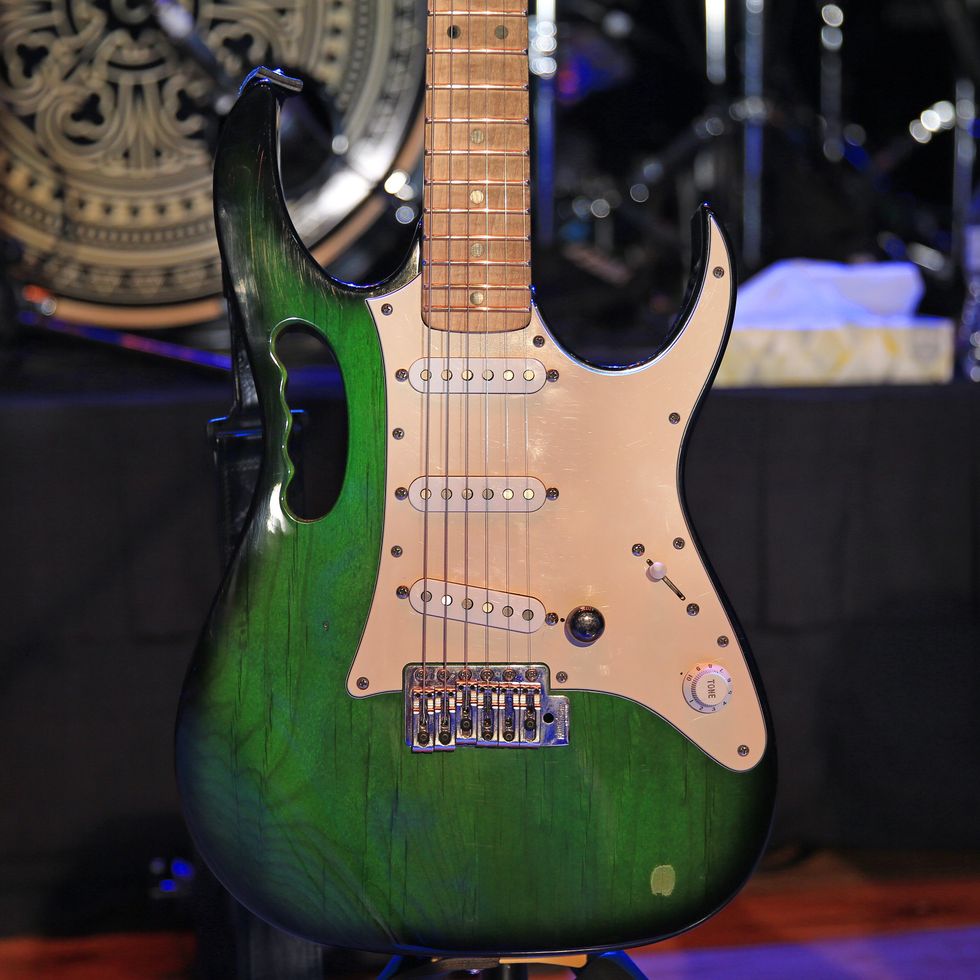
Made in the early 2000s by the Ibanez Custom Shop, this unique Jem/Strat hybrid boasts a classic sound while still maintaining the Vai aesthetic. It’s loaded with Fender Fat 50s single coils, a Wilkinson tremolo, and EVO gold jumbo frets over 21 frets with a custom 12” radius.
The Beast With Three Necks
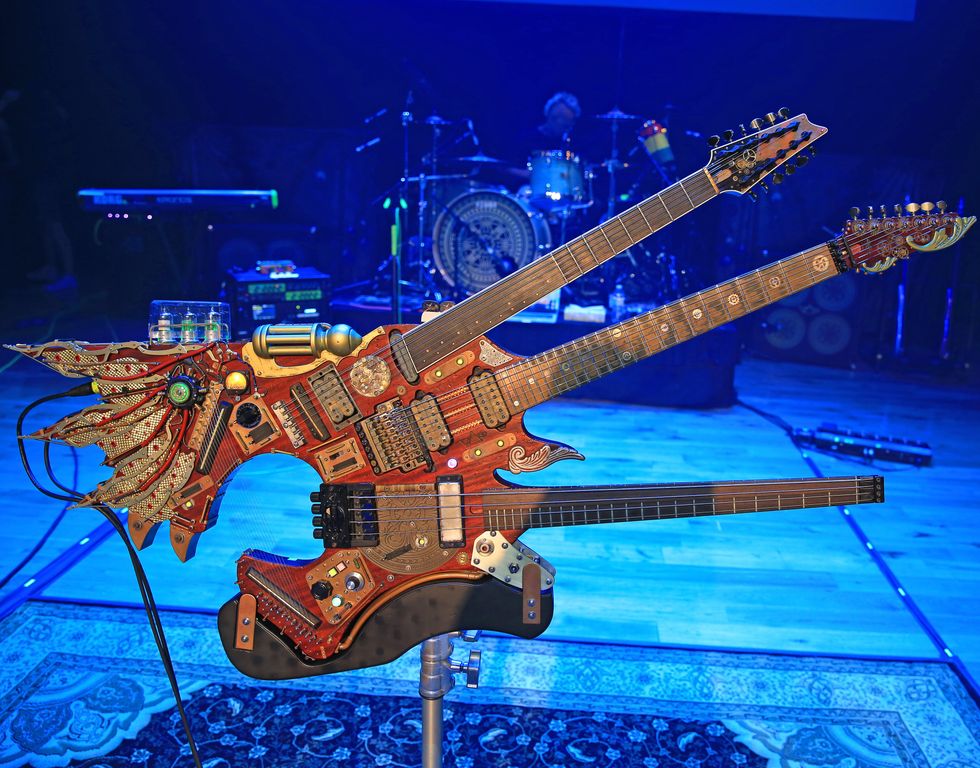
This Frankenstein monster, known as the Hydra, has one body, two headstocks, and three necks, accommodating both seven- and 12-string guitars as well as a four-string bass and half-fretless neck. Pickup combinations include a sustainer, humbuckers, single-coils, and a piezo. Oh, and did we mention there’s also a harp onboard?
The Beast With Three Necks
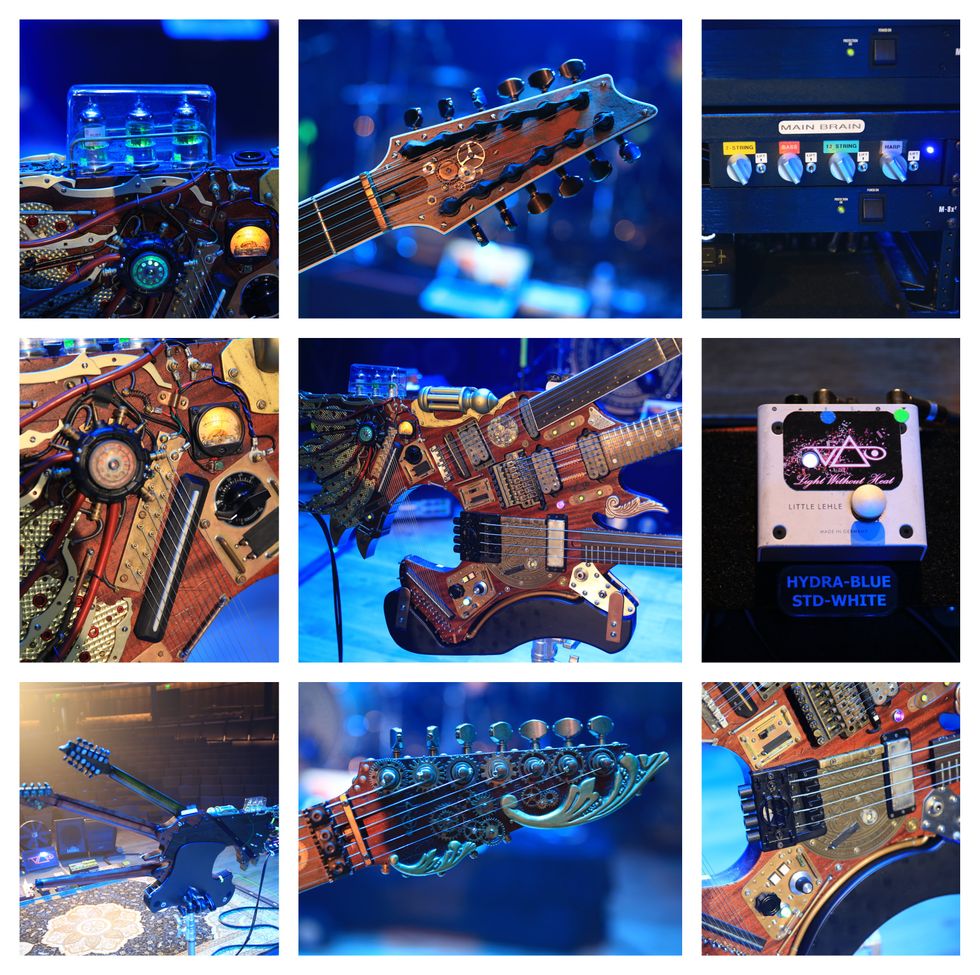
The Hydra has two outputs. One is an ethernet cable, and the other is midi.
The ethernet plugs into a custom Hydra Brain built by Ibanez, which is mounted in the middle of the rack. The ethernet input distributes the signal for each individual instrument on the hydra, and the brain gives each instrument its own 1/4” output, as well as a master level control for each instrument. The harp, bass, and 12-string 1/4” brain outputs go into individual inputs of the AXE FX III TURBO, for the Hydra Song Patch. These three instruments utilize effects and amp modeling in the Fractal, and come out stereo to the front-of-house mixing console. The 7-string, however, doesn’t utilize modeling at all. Its output from the brain goes into the Little Lehle III A/B pedal on Vai’s pedalboard, which gets routed into his pedalboard and normal amplifier signal path. In other words, the 7-string runs through Steve’s rig just like his normal guitars.
There are 3 small MIDI trigger buttons hidden in various locations on the Hydra’s body, which trigger sound effects featured in the song. The MIDI cable goes into a small custom-built splitter box, which feeds each trigger button into a Roland TD-27 drum module, hard-mounted in the middle of the rack and routed to front-of-house.
Rack 'Em Up
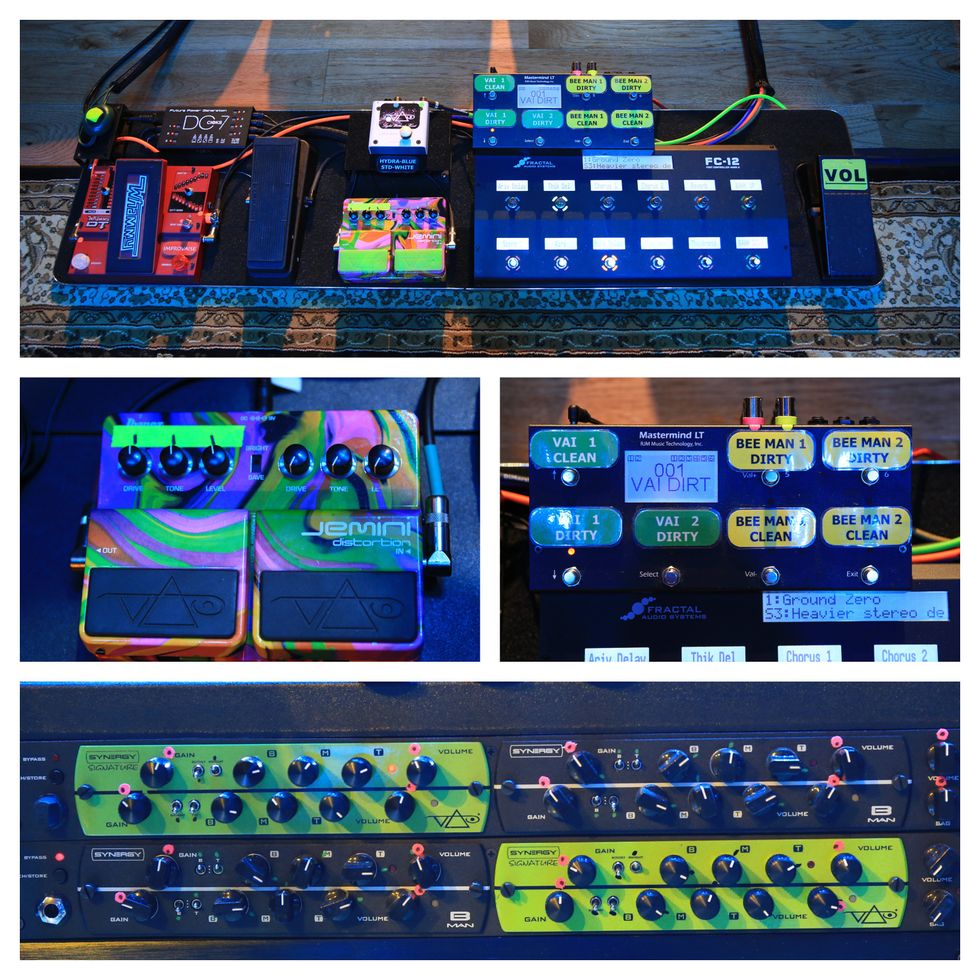
Vai runs a neon green, 60-foot-long custom DiMarzio instrument cable from his guitar to his board. The first pedal in the chain is a Little Lehle III A/B switch, that allows Vai’s team to switch between the Hydra and his regular guitars.
From there, the signal hits Vai’s Dunlop 95Q automatic wah, modded by MacArthur to remove the gain switch and add a volume and Q control on the left side of the wah. Vai runs the volume pot all the way up, and the Q around 95 percent of the way up.
From there the signal hits an Ibanez Jemini Distortion then a Digitech Whammy DT. Vai always has the right side of the pedal set to jump 7 semitones up from the moment the switch is stepped on. He uses this constantly, and its work can be heard on songs like “Weeping China Doll,” “Lights Are On,” and “Greenish Blues.”
Then the guitar goes into the input of the rack unit. There’s a Morningstar Effects ML5 MIDI looper, which has an Ibanez Jemini (seen on top of the rack) in a loop, that only comes on during various points during the Hydra performance, via MIDI.
After the ML5, the signal flows into two Synergy SYN-2 preamps, which are daisy-chained together to allow Vai full use of all four modules that are loaded into them: two Synergy VAI modules, and two Synergy B-MAN modules. The 2 Vai modules are set fairly similar—the first is his main tone, and the second one is set virtually identical, but with the gain backed down a bit. The B-MAN modules are used mainly for their beautiful clean channels, but also for their great ’70s overdriven channels, which Vai occasionally uses throughout the night. The module channels are controlled via the Mastermind LT MIDI footswitch on Vai’s pedalboard.
Shred Synergy
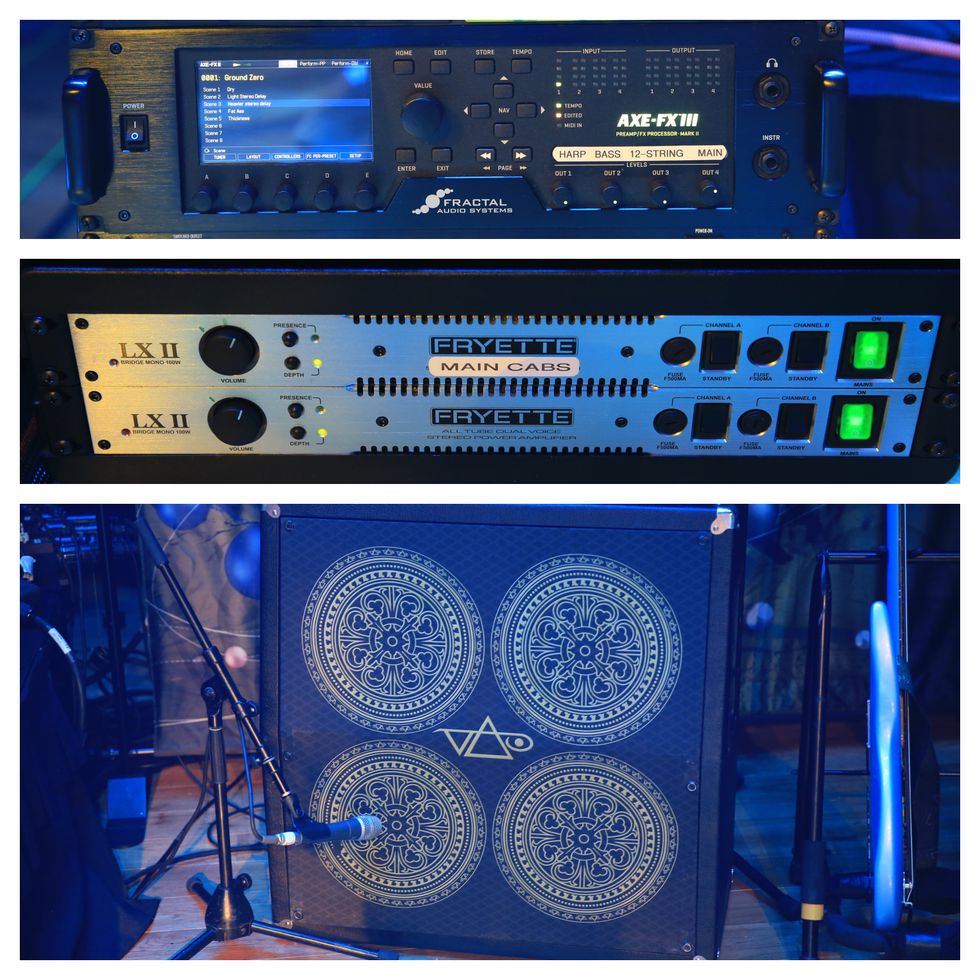
From the Synergys, the signal exits into the input of a Fractal Axe FX III Turbo. This unit is controlled simultaneously by the FC-12 switcher on Steve’s pedalboard, and a second FC-12, at MacArthur’s guitar boat. Each song in the set has its own patch in the Fractal, mainly utilizing different digital delays, chorusing, and reverbs for each song. Vai runs his rig in stereo, so the signal exits the Fractal’s outputs via left and right.
From the stereo output of the fractal, the left and right outputs now go into the left and right inputs of the Fryette LX-2 Stereo Tube Power amp. This power amp is 50 watts per-side, and both left and right are controlled via one single volume control, which allows Vai’s team to maintain even levels between the left and right guitar cabinets. Vai usually rides the volume around 1 or 2 o’clock (depending on the venue), with the depth control pushed in. A second LX2 powers Vai’s front-stage 1x12 stereo guitar monitors, which were custom-built by CARVIN.)
The main Fryette sends its output to the Carvin Legacy 4x12 cabinets on stage left and stage right. These cabs are each loaded with a quartet of Celestion Vintage 30s, and feature unique “Inviolate” artwork grill cloth, which MacArthur had custom-made by NoiseyHammer. These cabs have been with Vai for a long time, and can be seen in the Where The Wild Things Are DVD, when they were fitted with custom grill cloths from the Sound Theories album artwork.
Shop Steve Vai's Rig

Steve Vai Ibanez UV70P
Ibanez JSM100
DiMarzio Evolution Pickups
Ibanez Prestige AZ2203N
Synergy Vai Signature Preamps
Synergy BMan Preamps
DigiTech Whammy DT
Dunlop 535Q Cry Baby Wah
![Rig Rundown: Steve Vai [2023]](https://www.premierguitar.com/media-library/rig-rundown-steve-vai-2023.jpg?id=38640211&width=1200&height=675)



![Devon Eisenbarger [Katy Perry] Rig Rundown](https://www.premierguitar.com/media-library/youtube.jpg?id=61774583&width=1245&height=700&quality=70&coordinates=0%2C0%2C0%2C0)
































